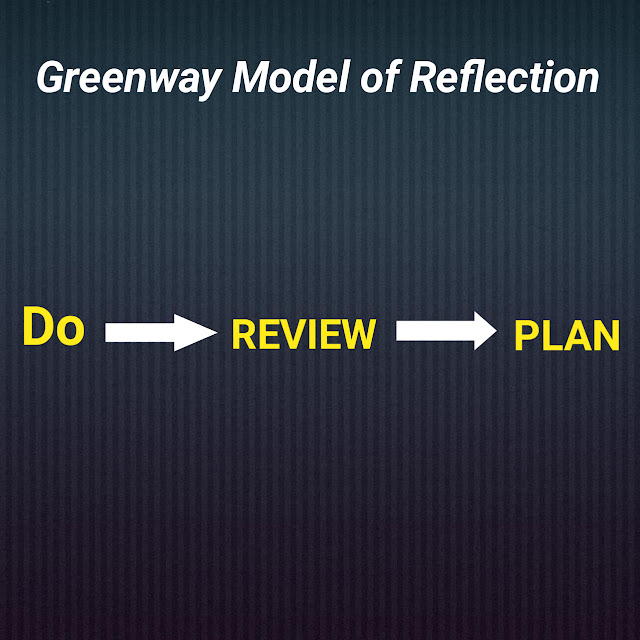Explain in detail the 3-stage reflective model of Greenway
What is Reflective model of green way
Greenaway (1995) explores this idea by developing a basic framework for reflection consisting of three stages. Often depicted as a cycle in the following way: DO-REVIEW-PLAN model.
1. DO - have experience.
2. REVIEW - review what happened and what can be learned from the situation.
3. PLAN - how to deal with the next experience to overcome some of the challenges and criticisms you faced for the first time.
In doing the Review, Greenaway concluded that “Good reviews help transform a dynamic experience into an enabling learning process where personal and social development is at the forefront. Review can enhance and enhance the teaching of entertainment. ”(Greenaway, 1992).
Before this 1995 article, Roger Greenaway had published three articles published between 1992-1993 in the Journal of Adventure Education and External Leadership on the review of external experiences. The first article was entitled Doing Reviewing. This has been one interesting quote reading that One of the main purposes of review is to keep in touch with what participants are thinking and feeling, and that may not be possible to match the sequence of planned reviews” (Greenaway, 1992: 15). Greenaway's idea here was that the review was a way for the teacher to find out what the participants gained from the external trip in this model and to review whether this was what was planned. In education, the teacher will participate in a particular situation to make the student feel a certain task or idea. The review was actually to ensure that the student met what was planned, and if not, the review would allow for changes.
In this first work, Greenaway pointed out that there may be unintended consequences. In the article Doing Reviewing an example was cited where a participant who excelled in a one-night stand alone had prior knowledge of this because he spent most of last week sleeping outside the bus shelter due to personal problems. This was not revealed until the review, but having the review allowed leaders to see that this was unexpected and allowed leaders to learn from this experience (Greenaway, 1992).
What are some benefits of Greenway’s 3 -Stage Model?
· It does not take long because it is a very simple model and quick to make. It is very helpful to start a teacher because it is very easy to understand and apply.
· Very easy and Easy to use.
· And because it is completely focused on action. It is based on the teacher's daily experience and that gives him great value.
· And what we look at with this model is therefore something that can be done in schools very quickly and easily.
How this model is Practical for novice teachers?
Discussion on the practicality of 3 stages reflective model of greenway for a novice teacher
The 1995 model is easy to remember as DO-REVIEW-PLAN. It is a single closed loop model that focuses on a specific event. Criticism of this model focuses on the lack of punctuation in each section of this model when considered ambiguous.
Although the 1995 Greenaway model is important as it puts a focus on pre-planning before doing what is relevant to the educational and nursing contexts in which repetitive tasks can be performed. For example, in care, this may be used for routine assessments or activities where reviews should be considered each time that would affect prior planning prior to the next situation. For example, after a preliminary review, it may be assumed that there was insufficient communication between nurses, resulting in recommendations from the review that could be applied, meaning that a team meeting would be scheduled before the next evaluation. The above is helpful, however, given that the model is not clear it can be expected that the results will vary depending on who is using it to demonstrate, so beginners in self-analysis may fail to produce appropriate recommendations (Howatson-Jones, 2016). This model fails to provide the signals that a person with no academic background will need to present. It provides a simple series of events that need to be done but does not specify how one should manage each event.








0 Comments
How can we help you dear?